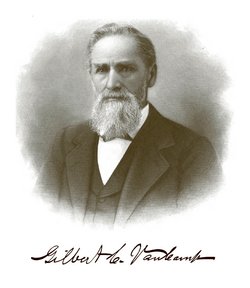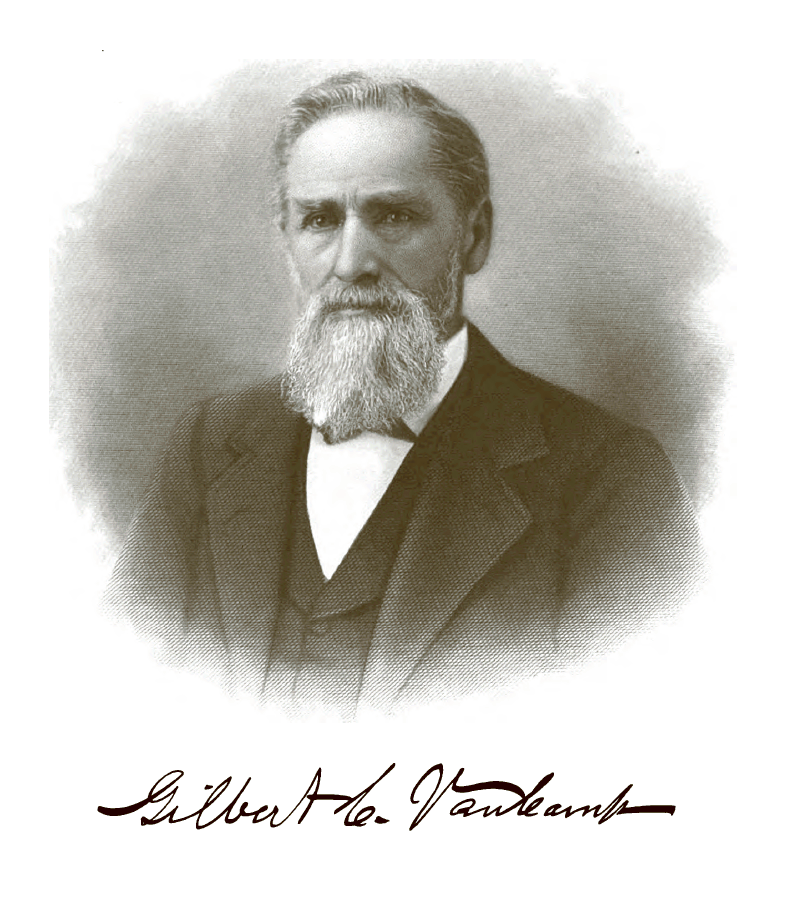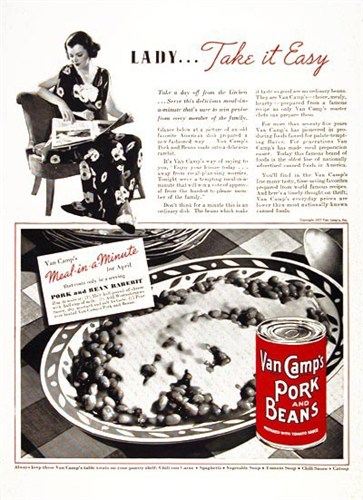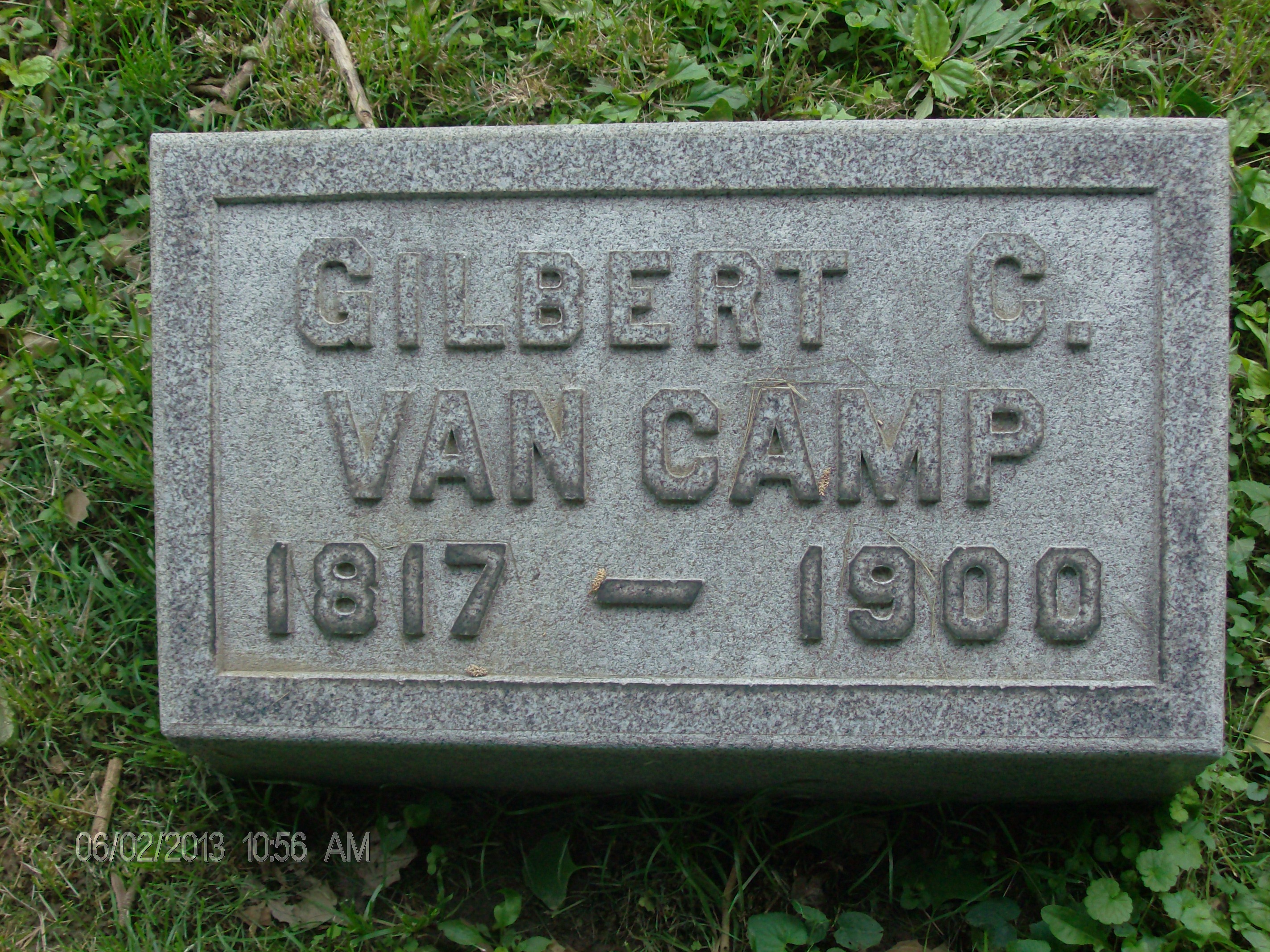VanCamp is one of the good old Holland names (originally spelled "Van Campen") transplanted in New Jersey and New York during the colonial period. The vearers of it were brave and patriotic men who loved liberty and independence and believed in the Christian religion.
Gilbert C. VanCamp is a descendant of the New Jersey branch of the family. His grandfather served as Captain of volunteers in the Revolutionary War, entering the army from the Jersey Colony and rendering valiant service as a patriot.
His father, Charles VanCamp, came to the Territory of Indiana from the vicinity of Trenton and settled near Harrison, in Dearborn county, in 1804. Here he engaged in farming and the wagon maker's trade, living in that county and Franklin until his death in 1863 at Metamora. While living near Harrison he married Mary Halstead, a native of Rochester, New York, born in 1800, the daughter of James Halstead who with his family set out for the New West, with a party of emigrants, when Mary was eight years old. They traveled by wagon to the headwaters of the Allegheny river, where they sold their wagons and horses, invested the proceeds in lumber, constructed a raft and floated down the Allegheny and Ohio rivers with their household goods to North Bend, a short distance below Cincinnati. The place was then somewhat famous as the residence of General W. H. Harrison, Governor of Indiana Territory and soon afterwards the hero of Tippecanoe. Members of this little colony bought land in the State of Ohio, not far from the Indiana line. Murat Halstead, the journalist and war correspondent, belongs to this branch of the Halstead family.
Gilbert C. VanCamp was born at Brookville, Franklin county, December 25, 1817, the son of Charles and Mary (Halstead) VanCamp. His education was obtained in private schools conducted in the neighborhood, as the system of public schools for the young State was not yet organized. When seventeen years old he procured a situation in a flour mill near Brookville and learned the trade of miller. He was economical and frugal, saving his wages until at the end of four years his capital enabled him to engage in business on his own account. Forming a partnership with Mr. Fudge, under the style of Fudge & VanCamp, he opened a store for the sale of tinware and stoves, which was probably the first stove store established in the state of Indiana. Mr. VanCamp assumed the active management of the business and also learned the trade of tinnier, making with his own hands many of the articles sold. After four years of this mercantile and mechanical business at Brookville he sold his interest and for a while resumed milling. From 1845 to 1860 he carried on trade in stoves and tinware, the last seven years of the time at Greensburg. In 1860 he removed to Indianapolis, where he became associated with Calvin Fletcher and Martin Williams, under the firm name of Fletcher, Willliams & VanCamp, for the introduction of the cold storage process of preserving fruits, meats, etc. Mr. VanCamp, as manger of the firm's business, erected a warehouse with walls three feet in thickness, with a filling of cut straw, the inner surface being lined with galvanized iron and the outside covered with sheet iron. This was the first satisfactory and successful experiment in the nature of a cold storage warehouse, the principle of which has been since adopted in the ordinary refrigerator and in refrigerator cars for the transportation of fresh fruits and fresh meats. His first experiments were directed exclusively to the preservation of fruits, but soon they were extended to the storage of partially cured hams and subsequently they were enlarge indefinitely until the business of cold storage in its various forms and uses has grown to immense proportions.
Mr VanCamp early developed a genius for invention, and ingenuity in construction to make his inventions practical. In 1862 the idea of preserving fresh fruits and vegetables by canning them in summer for winter consumption suggested itself to him and straightway he demonstrated its practicability. Beginning in a small way he improved and perfected the methods, and increased the scope of his operations until the business of canning by the VanCamps and others has grown into a great and prosperous industry, making it possible to serve the table in any part of the civilized world with fruit and vegetables every day of the year. The VanCamp Packing Company was incorporated in 1882, with Gilbert C. VanCamp as president, a position which he has held continuously to the present time. His son Frank is treasurer and general manager. As suggestive of the magnitude of the business it may be stated this company used six million tin cans in its operations last year, shipping its products to every state and territory of the Union and to Great Britain and the Continent of Europe. It sells only to wholesale grocers.
Mr. VanCamp was married March 28, 1844, to Mary Ann Gregg, who died five years later without issue. In October, 1850, he married Hester Jane Raymond, daughter of Thomas and Amy (Fluelling) Raymond of Franklin county. The Raymonds are of French descent, but the family came from New York to Indiana and lived on a farm in Franklin county, As the fruit of this marriage nine children were born, four of whom died in infancy. The living are Mary, wife of Thomas B. Jackson, Cortland; Clara, wife of John W. Bowlus; George and Frank - all of them residents of Indianapolis, and living near their parents.
At the age of eighty-one years Gilbert C. VanCamp is as active and vigorous as the average man of sixty. He has had a busy life and one of great usefulness. The industries he has established have extended their benefits to thousands in the form of remunerative employment, and carried blessings to millions in the form of better food. He has been instrumental in conserving the elements and forces of nature for the benefit of mankind and generations yet unborn will share in the benefits his modest genius has conferred. Since early manhood he has been a professor of Christianity, first uniting with the Methodist and subsequently with the Presbyterian church. He was one of the organizers of the old Fifth Presbyterian church, which was afterwards merged into another, but is now a member of the Second Presbyterian church of Indianapolis. He participates in the activities of the church and in the organized charities of the city. His temperament is sanguine and his disposition charitable.
Politically he was a Whig and became a Republican when the Whig party dissolved. He has never been a candidate for political office. By industry and frugality he has acquired a competence, with which he is entirely content. Had his mind and heart been set on money-making, he would have amassed a colossal fortune. It is the greater glory of his life that it has not been exclusive or selfish or sordid, and that so many others have been sharers in the fruits of his productive industries and his beneficial inventions.
VanCamp is one of the good old Holland names (originally spelled "Van Campen") transplanted in New Jersey and New York during the colonial period. The vearers of it were brave and patriotic men who loved liberty and independence and believed in the Christian religion.
Gilbert C. VanCamp is a descendant of the New Jersey branch of the family. His grandfather served as Captain of volunteers in the Revolutionary War, entering the army from the Jersey Colony and rendering valiant service as a patriot.
His father, Charles VanCamp, came to the Territory of Indiana from the vicinity of Trenton and settled near Harrison, in Dearborn county, in 1804. Here he engaged in farming and the wagon maker's trade, living in that county and Franklin until his death in 1863 at Metamora. While living near Harrison he married Mary Halstead, a native of Rochester, New York, born in 1800, the daughter of James Halstead who with his family set out for the New West, with a party of emigrants, when Mary was eight years old. They traveled by wagon to the headwaters of the Allegheny river, where they sold their wagons and horses, invested the proceeds in lumber, constructed a raft and floated down the Allegheny and Ohio rivers with their household goods to North Bend, a short distance below Cincinnati. The place was then somewhat famous as the residence of General W. H. Harrison, Governor of Indiana Territory and soon afterwards the hero of Tippecanoe. Members of this little colony bought land in the State of Ohio, not far from the Indiana line. Murat Halstead, the journalist and war correspondent, belongs to this branch of the Halstead family.
Gilbert C. VanCamp was born at Brookville, Franklin county, December 25, 1817, the son of Charles and Mary (Halstead) VanCamp. His education was obtained in private schools conducted in the neighborhood, as the system of public schools for the young State was not yet organized. When seventeen years old he procured a situation in a flour mill near Brookville and learned the trade of miller. He was economical and frugal, saving his wages until at the end of four years his capital enabled him to engage in business on his own account. Forming a partnership with Mr. Fudge, under the style of Fudge & VanCamp, he opened a store for the sale of tinware and stoves, which was probably the first stove store established in the state of Indiana. Mr. VanCamp assumed the active management of the business and also learned the trade of tinnier, making with his own hands many of the articles sold. After four years of this mercantile and mechanical business at Brookville he sold his interest and for a while resumed milling. From 1845 to 1860 he carried on trade in stoves and tinware, the last seven years of the time at Greensburg. In 1860 he removed to Indianapolis, where he became associated with Calvin Fletcher and Martin Williams, under the firm name of Fletcher, Willliams & VanCamp, for the introduction of the cold storage process of preserving fruits, meats, etc. Mr. VanCamp, as manger of the firm's business, erected a warehouse with walls three feet in thickness, with a filling of cut straw, the inner surface being lined with galvanized iron and the outside covered with sheet iron. This was the first satisfactory and successful experiment in the nature of a cold storage warehouse, the principle of which has been since adopted in the ordinary refrigerator and in refrigerator cars for the transportation of fresh fruits and fresh meats. His first experiments were directed exclusively to the preservation of fruits, but soon they were extended to the storage of partially cured hams and subsequently they were enlarge indefinitely until the business of cold storage in its various forms and uses has grown to immense proportions.
Mr VanCamp early developed a genius for invention, and ingenuity in construction to make his inventions practical. In 1862 the idea of preserving fresh fruits and vegetables by canning them in summer for winter consumption suggested itself to him and straightway he demonstrated its practicability. Beginning in a small way he improved and perfected the methods, and increased the scope of his operations until the business of canning by the VanCamps and others has grown into a great and prosperous industry, making it possible to serve the table in any part of the civilized world with fruit and vegetables every day of the year. The VanCamp Packing Company was incorporated in 1882, with Gilbert C. VanCamp as president, a position which he has held continuously to the present time. His son Frank is treasurer and general manager. As suggestive of the magnitude of the business it may be stated this company used six million tin cans in its operations last year, shipping its products to every state and territory of the Union and to Great Britain and the Continent of Europe. It sells only to wholesale grocers.
Mr. VanCamp was married March 28, 1844, to Mary Ann Gregg, who died five years later without issue. In October, 1850, he married Hester Jane Raymond, daughter of Thomas and Amy (Fluelling) Raymond of Franklin county. The Raymonds are of French descent, but the family came from New York to Indiana and lived on a farm in Franklin county, As the fruit of this marriage nine children were born, four of whom died in infancy. The living are Mary, wife of Thomas B. Jackson, Cortland; Clara, wife of John W. Bowlus; George and Frank - all of them residents of Indianapolis, and living near their parents.
At the age of eighty-one years Gilbert C. VanCamp is as active and vigorous as the average man of sixty. He has had a busy life and one of great usefulness. The industries he has established have extended their benefits to thousands in the form of remunerative employment, and carried blessings to millions in the form of better food. He has been instrumental in conserving the elements and forces of nature for the benefit of mankind and generations yet unborn will share in the benefits his modest genius has conferred. Since early manhood he has been a professor of Christianity, first uniting with the Methodist and subsequently with the Presbyterian church. He was one of the organizers of the old Fifth Presbyterian church, which was afterwards merged into another, but is now a member of the Second Presbyterian church of Indianapolis. He participates in the activities of the church and in the organized charities of the city. His temperament is sanguine and his disposition charitable.
Politically he was a Whig and became a Republican when the Whig party dissolved. He has never been a candidate for political office. By industry and frugality he has acquired a competence, with which he is entirely content. Had his mind and heart been set on money-making, he would have amassed a colossal fortune. It is the greater glory of his life that it has not been exclusive or selfish or sordid, and that so many others have been sharers in the fruits of his productive industries and his beneficial inventions.
Gravesite Details
burial: APR 5,1900
Family Members
Sponsored by Ancestry
Advertisement
Records on Ancestry
Advertisement











